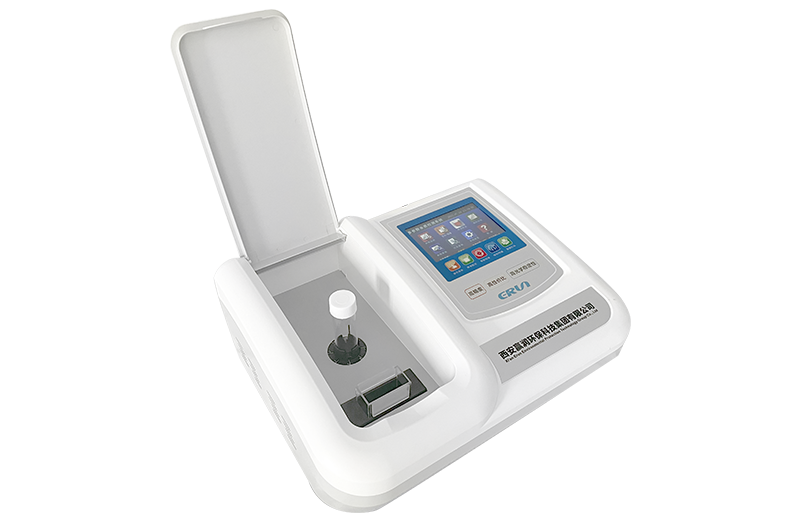Direct drinking water testing must adhere to the national standard "GB 5749-2022 Sanitary Standard for Drinking Water," which covers microbiological, toxicological, and sensory indicators, among others. Laboratories need equipment such as multi-parameter analyzers and spectrometers to ensure water safety and compliance.

With the growing demand for healthy drinking water, direct drinking water systems are becoming increasingly common in residential communities, schools, and businesses. But have you ever wondered if this water is truly safe? A 2021 report from the National Health Commission showed that while the overall pass rate for drinking water nationwide exceeds 95%, some areas still face issues like microbiological contamination and heavy metal pollution. Direct drinking water testing not only prevents waterborne diseases but also ensures compliance with mandatory national standards, avoiding long-term health risks.
For example, residents in a residential community in a first-tier city once reported an unusual odor in their direct drinking water. Laboratory tests revealed that the total trihalomethane content exceeded the standard limit. Long-term ingestion of such substances may increase cancer risks. Through timely corrective measures, the water quality in the community was restored, preventing a potential public health incident. This real-life case underscores the importance of testing.
The primary reference for direct drinking water testing in China is the "GB 5749-2022 Sanitary Standard for Drinking Water." Fully implemented in 2023, this standard adjusts the testing indicators to 97 items, including microbiological indicators (e.g., total coliforms), toxicological indicators (e.g., heavy metals, pesticide residues), and sensory indicators (e.g., turbidity, pH). Key parameters and their limits include:
Microbiological Indicators: Total coliforms must not be detected (CFU/100mL) to ensure the absence of pathogens.
Toxicological Indicators: The lead limit is 0.01 mg/L, and arsenic is 0.01 mg/L to prevent chronic poisoning.
Sensory Indicators: Turbidity must be ≤1 NTU, and pH must remain between 6.5 and 8.5 to ensure taste and appearance.
This standard references the World Health Organization (WHO) "Guidelines for Drinking-water Quality" and incorporates localized indicators such as perchlorate, tailored to China's water sources. Laboratories must strictly follow standard methods during testing, such as using enzyme substrate methods for microbiological analysis and atomic absorption spectrometry for heavy metal detection.
To comprehensively assess the safety of direct drinking water, laboratories require various types of instruments covering physical, chemical, and microbiological analyses. Essential equipment and their application scenarios include:
Benchtop Multi-Parameter Water Quality Analyzer
Used for rapid detection of pH, turbidity, residual chlorine, and total dissolved solids (TDS). For instance, the ERUN-ST7 model from Yingrun Environmental Protection can simultaneously measure over 10 parameters, making it suitable for preliminary on-site screening and precise laboratory analysis. Its repeatability error is less than ±2%, complying with the GB/T 15481-2015 calibration specification.
Atomic Absorption Spectrometer (AAS)
Detects heavy metals such as lead, cadmium, and mercury. For example, a third-party testing agency used this instrument to identify elevated lead levels in a school's direct drinking water (detected value: 0.015 mg/L, exceeding the national standard), prompting pipe replacements.
Gas Chromatography-Mass Spectrometer (GC-MS)
Analyzes organic pollutants, such as pesticide residues and volatile organic compounds. According to the "Technical Specifications for Environmental Monitoring," its detection limit can reach 0.1 μg/L.
Microbiological Incubator and Fluorescence Microscope
Used for total bacterial count and coliform enumeration to ensure the absence of biological contamination.
The combined use of these instruments can cover over 90% of the indicators specified in GB 5749-2022. Laboratories should optimize equipment configuration based on sample volume and workflow. For instance, high-throughput laboratories may introduce automated analysis systems to improve efficiency.
During a 2023 spot check of direct drinking water stations in its jurisdiction, a provincial CDC used the Yingrun ERUN-ST7 benchtop multi-parameter water quality analyzer to detect abnormal turbidity at multiple stations (measured values: 1.5-2.0 NTU, exceeding the national standard). Further analysis with an atomic absorption spectrometer ruled out heavy metal contamination, ultimately identifying the issue as aging filtration systems.
The solution included replacing filter cartridges and adding pre-treatment units. Post-remediation retests showed turbidity at all stations had dropped to 0.3-0.8 NTU, with pH stabilizing around 7.2. This case demonstrates the value of multi-parameter instruments in rapid diagnosis and the critical role of standardized testing processes in problem.

Direct drinking water testing is not only about regulatory compliance but also a vital line of defense for public health. By combining national standards with advanced instruments (e.g., multi-parameter analyzers, spectrometers), laboratories can provide accurate and reliable water quality assessments. If you need further information about testing solutions or equipment selection, feel free to consult a professional team for tailored advice.